Tuesday 12 March saw delegates from across the industry gather for the annual Rail Safety Summit, at Loughborough University’s Holywell Park Conference Centre.
The conference saw health and safety experts present the latest information and developments within their field of expertise alongside companies exhibiting the most exciting products and services within the rail industry. It provided attendees with networking opportunities and the chance to catch up with peers from throughout the industry.
Regular Rail Media contributors Colin Wheeler and Clive Kessel acted as hosts, guiding attendees and speakers through the day’s proceedings.
Here is just a taste of what our guest speakers had to say.
Network Rail Health & Safety Management System update
Abigail Patterson, principal operations safety specialist at Network Rail, kicked off the day’s presentations with an overview of the recent updates to Network Rail’s Health & Safety Management System.
Most organisations within the rail industry possess such a framework, said Abigail, pointing out Network Rail’s current version: a +200-page, densely worded document with complicated language. Abigail admitted this is a daunting read.
Around 12 months ago, Abigail began a project to update the document and make it useful for as many employees as possible. She discussed the challenges of delivering a Health & Safety Management System which is accessible to all but also that covers the whole scope of Network Rail’s operations.
The updated system is more visually appealing, shorter, at under 70 pages, and the feedback received has been very positive. The updated Health & Safety Management System will be launched in May.
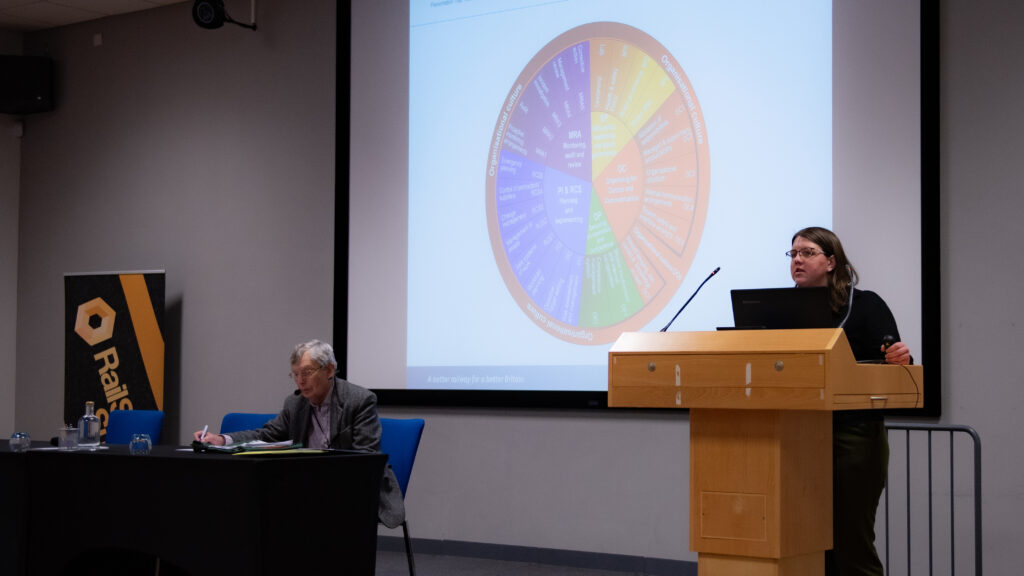
Safety risk management framework: A proactive data journey
Laura Reardon, head of safety risk management at the Light Rail Safety and Standards Board (LRSSB), next took the stand to discuss the organisation’s Safety Risk Management Framework.
LRSSB was established in 2018, as a result of RAIB’s recommendations following the 2016 Croydon tram crash.
Since its formation, LRSSB has worked to meet RAIB’s recommendations, two of which concerned gathering sector-level data on safety performance and bringing operators together to understand, in depth, the operational risks.
Laura explained how together with a major upgrade of the Tramway Accident and Incident Reporting system (TAIR), the LRSSB has made significant progress around sector-wide safety risk management and data analytics, including the development of a national risk profile and the updating of models for individual networks.
It’s data-led Safety Management Framework has provided an empirical understanding of risk and controls to prevent and mitigate against hazardous events including those of low frequency/high consequences. Since 2021, it has reduced total fatal risk on the network by 3% (equivalent to preventing a fatality every 4.2 years) and has reduced overall risk by 5% (equivalent to preventing over 100 class one minor injuries per year, in addition to fatality reduction).
Safety performance review
Following a break for refreshments, Simon Morgan, Network Rail’s head of corporate safety, provided attendees with a review of the organisation’s safety performance.
Simon first outlined the risk environment in which Network Rail operates, including political, economic, socio-cultural, technological, legal, and environmental risks. The forthcoming general election, interest rates and inflation, new passenger flows and reasons for travel, as well as climate change are all key causes for vigilance, among many others.
Benchmarked against other forms of travel, excluding air travel, mainline rail remained the safest option said Simon, though compared to other industries Network Rail is not performing so well on lost time injury frequency rates, with the Oil & Gas industries topping the chart.
Looking at long term workforce safety trends, Simon remarked that things are moving in the right direction but that the trend has flattened recently. “If we continue to do the same things, we’re going to get the same results or worse,” said Simon, “definitely, a different approach is required.”
Long term workforce health trends are relatively stable, said Simon, though he questioned whether the trend truly relates to long-term health concerns, such as inhalation of silica dust and welding fumes. “We want people to be healthy when they finish working, and to enjoy a healthy and fruitful retirement,” he said.
Simon went on to talk about passenger safety and the potential for accidents. The trend is currently relatively stable in the low figures, with collisions with vehicles at level crossings and earthworks being the main risks, though delivery of the weather action task force in CP7 will substantially improve the earthworks risk. Train overspeeding is an emerging concern.
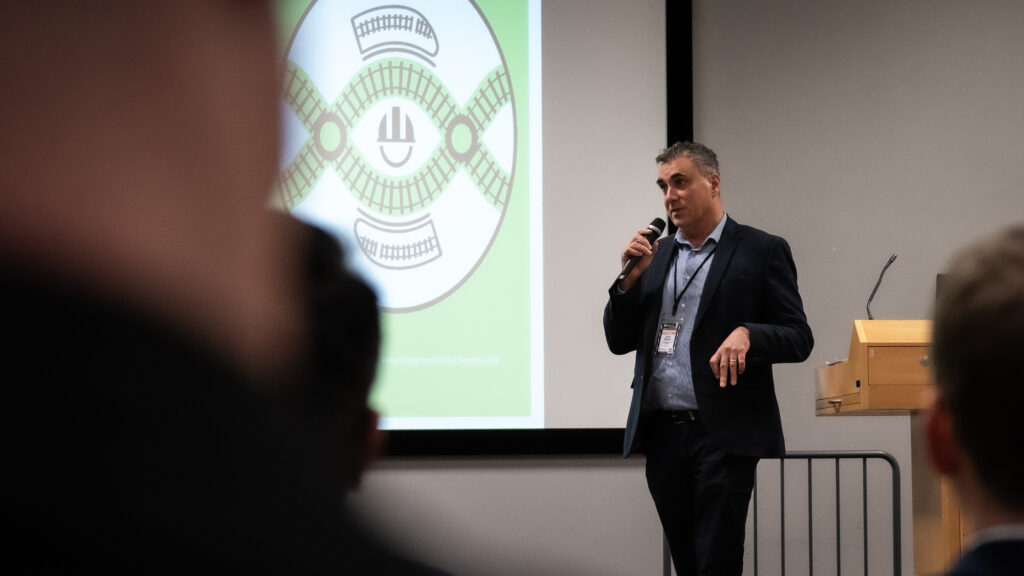
Rail health and safety strategy
Chris Knowles, director of system safety and health at RSSB, delivered an update on the organisation’s Rail Health and Safety Strategy, a five-year strategy developed through industry consultation.
Citing data from the Annual Health and Safety Report 2022/23, Chris drew comparisons between the safety record of rail and other modes of transport, explaining that travel by bus or coach is four times less safe, on average, than making a rail journey of the same length, while the same journey by car is 14 times less safe. So, he asked, why do people choose to travel by these modes if they are less safe? Reliability, journey time, flexibility, and low perception of risk are all contributors. The fact, Chris said, is that we need a safe railway, but also one which is high performing and affordable.
While the risk of accidents has fallen significantly over the past 20 years, Chris said the derailment at Carmont in 2020, which resulted in three fatalities, shows that the potential for serious accidents remains. “As an industry,” he said, “we must continue to be vigilant in assuring the health and safety of those using the rail network and those that work on the railway.”
Incidents of locked wheels on freight vehicles
Next, attendees heard from Steve Taylor, general manager of the Rail Wagon Association (RWA).
The rail freight industry is safe, he said, but the Llangennech derailment of 2022 led to a renewed focus on safety. The incident occurred when one set of wheels on the third wagon in the train stopped rotating, leading to the third wagon and those behind it derailing. Since 2017, locked wheels have led to incidents on four occasions that are known at: Ferryside in October 2017; Pencoed in March 2021; and at Petteril Bridge in October 2022 and September 2023.
In March 2022, the RWA set up the Locked Wheels Task Force to try to work out how many such incidents have actually occurred, what factors link them, and what can be done quickly and economically to try and detect wheel locking when it occurs. The Task Force has found that although the autumn is a high-risk time of year, wheel locking cannot solely be blamed on leaf fall, and that freight trains running on the west side of England and Wales are more vulnerable than those on the East. The Task Force also feels that freight braking in low adhesion conditions is a consideration, and that Network Rail may look into where it focuses the operation of its rail head treatment (RHT) trains.
The RWA has identified 32 actions covering: Network Rail’s Low Adhesion Forecast; RHT trains; identification of low adhesion sites; education of rail staff; increased understanding of low adhesion; and the use of technology to reduce risk and detect locked wheels.
What can we learn from the Sailsbury accident?
Andy Hall, chief inspector of rail accidents at RAIB, returned to the Rail Safety summit after presenting in 2023. His focus this year was the 2021 Salisbury rail crash, it’s causes, and areas of recommendation.
At around 18:43 hrs on 31 October 2021, two trains were approaching a converging junction located to the east of Salisbury in Wiltshire on two separate lines, explained Andy. The route was set for the first train to go through the junction at 20 mph. The second train was to stop at a red signal protecting the junction. However, it did not stop and subsequently collided with the side of the first train at 52 mph, leading to the derailment of both trains. Thirteen people were hospitalised. Two, including the driver, were seriously injured.
The causes of the accident, Andy explained, were that wheel/rail adhesion was very low in the area where the driver of the second train applied the train’s brakes, and that the driver did not apply the train’s brakes sufficiently early on approach to the signal protecting the junction to avoid running on to it, given the prevailing low level of adhesion. The level of wheel/rail adhesion was very low due to leaf contamination and had been made worse by a band of drizzle that occurred immediately before the passage of the second train.
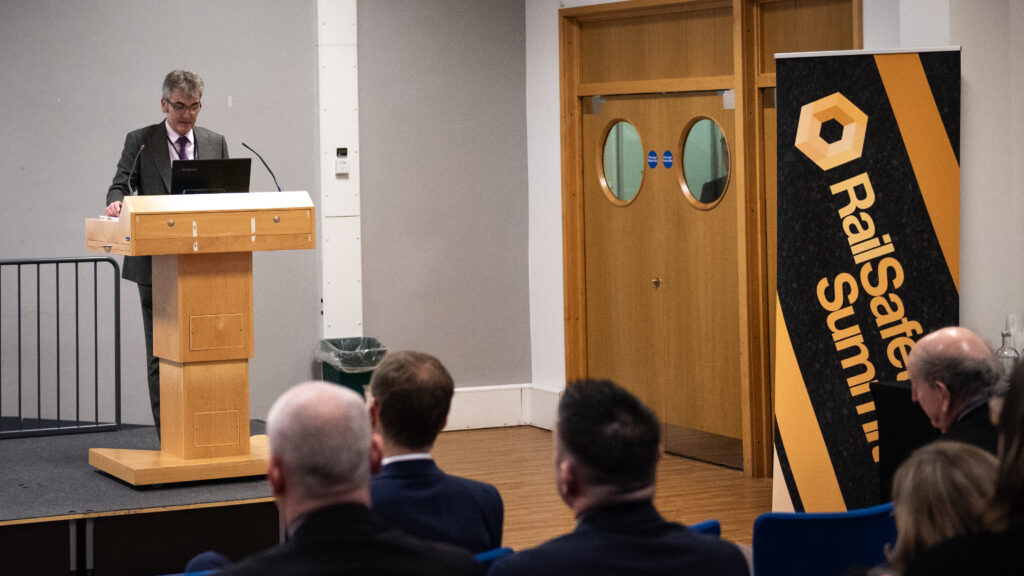
Andy explained that the second train was fitted with a single fixed rate sander system. Had it been fitted with a double fixed rate sander system, the higher sand delivery rates would certainly have provided better low adhesion braking performance, which would have led to a reduced collision speed, and possibly avoided collision altogether.
The underlying factors of the collision, said Andy, were that Network Rail’s Wessex route did not effectively manage the risks of low adhesion associated with the leaf fall season. This was related to issues including: resourcing; liaison between departments; track access constraints; proper understanding of railhead treatment effectiveness; and staff competences. RAIB also found that South Western Railway was not effectively preparing its drivers for assessing and reporting low adhesion conditions was a possible underlying factor.
Concluding, Andy said that adhesion related incidents and accidents have been present throughout the life of RAIB, however managing the risk is not simple. As the three top causal factors were associated with different elements of the industry, he explained, coordination and cooperation are key.
In future, new technology may prevent this type of accident, but until then the industry must remain “chronically uneasy”.
Delivering a healthier and safer railway: Reflections from the regulator and new HM chief inspector
Next, Richard Hines took the lectern to discuss his early reflections as incoming HM chief inspector of railways; emerging themes and thinking around health and safety; and the importance of collaboration.
Richard gave us a brief overview of his career which saw him work for eight years at British Sugar, before spending 14 years with the Health and Safety Executive, rising in his last three years to head of operations. Joining ORR in 2020, he took on the role of HM Deputy Chief Inspector in 2021 and became Acting HM Chief Inspector of Railways / director of railway safety at the beginning of this year.
Richard was keen to stress the importance of listening to frontline staff and investigating and acting on concerns they may raise. He pointed to the example of the Carmont derailment, which was caused in part by a string of failures in coordination and communication.
“Nobody recognised that the drainage system hadn’t been constructed as it was designed,” he said. “Nobody recognised that the CDN health and safety file was missing. Nobody ensured that the asset management system was followed and it led to that asset being handed over in a condition that wasn’t known about.”
Richard pointed out that many people did speak up with concerns about Carmont, but those concerns went unheard, and there was a lack of a co-ordinated response to the storm which occurred in the hours before the derailment.
Considering the ORR’s ongoing commitment to health and safety, Richard said his approach to his new role is to build on the legacy built by outgoing HM Chief Inspector Ian Prosser, and to follow a policy of evolution, rather than revolution.
When focussing on the future, he stressed, the industry needed to remember the lessons of the past. It must also nurture an environment that listens to, understands, and acts on feedback from frontline staff.
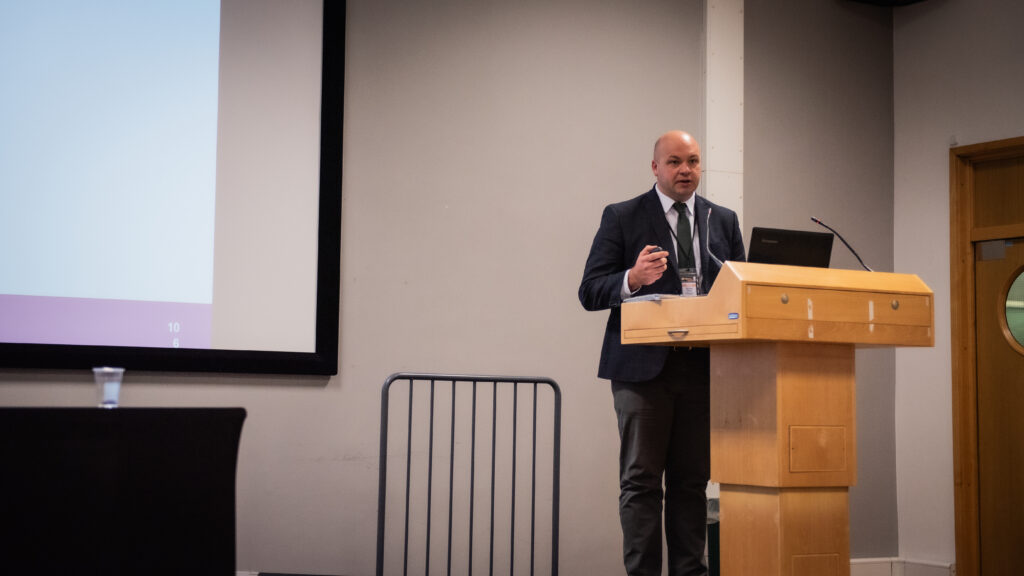
Discussing the public’s expectations of transport safety
Before breaking for refreshments, the conference was addressed by Lord Tony Berkely OBE. Lord Berkely spent 15 years developing and building the Channel Tunnel, followed by chairmanship of the UK Rail Freight Group. He was a board member and sometime chair of the European Rail Freight Association and was a founder and currently Honorary Board Member of Allrail. He is a regular contributor in the House of Lords on rail, competition, and the safety of different types of transport.
Nothing can be 100% safe, he said, otherwise people would never leave their houses. So what does the public expect of transport safety? The answer, he said was “Safety as far as is reasonably practicable.”
Although there is progress to be made, he stressed that rail does very well in terms of safety, especially when compared to road. With statistics indicating road users are four times more likely to be involved in a fatal accident than those using rail, he suggested that the same stringent safety measures that the rail industry is subject to, should be applied also to roads. Transport legislation should apply to all modes equally, he argued.
Tony also warned about the trend toward automation of transport, questioning its benefits and whether the subject of vehicle-environment interface has been sufficiently explored. The driving standards of automated vehicles must also be much higher than those of humans, he said, if the technology is to succeed.
Improving railway safety
Starting the final session of the day, David Shipman, rail design lead at the Global Centre of Rail Excellence (GCRE), gave the audience an outline of the planned purpose, capability, and functionality of this proposed facility.
Situated in South Wales, at the head of the Dulais Valley, about 10 miles north-east of Swansea, the GCRE site will, said David, “provide new opportunities to improve safety across the rail sector, offering far greater facilities to test and prove all sorts of systems, technologies, and processes.”
With a purpose-built, electrified, 7km high speed track, GCRE will allow new products to be tested in a live environment, 24 hours a day, with no risk to the mainline. It will provide an environment that is relatively risk free and, relying on automation where feasible, it aims to separate the human from the testing process as far as possible.
It will offer a unique environment in which to undertake much more extensive and representative preparation for technology introduction, for both trains and infrastructure, David explained.
The facility has received £70 million of support from the public sector through a £50 million Welsh Government equity investment and a £20 million UK Government grant, as well as £10 million from Innovate UK and £15 million as part of UKRRIN.
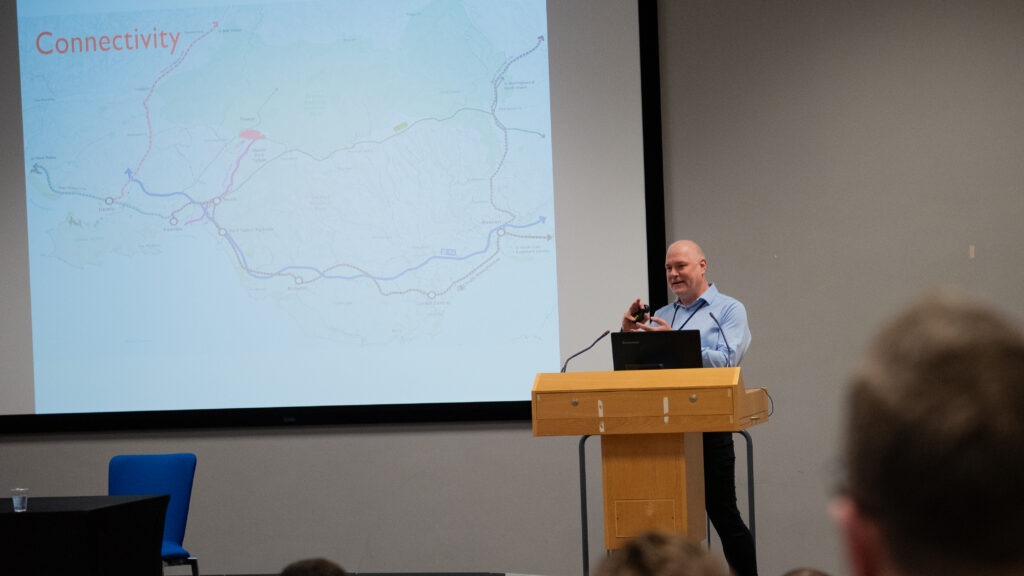
Enforcement trends
Ben Davies, a senior associate at Burges Salmon LLP, gave the final presentation of the day, providing an insight into prosecution trends within the industry. Prior to joining Burges Salmon, Ben had been an in-house lawyer at the ORR.
He began by listing five key factors which make health & safety compliance essential, namely: public and worker safety; avoidance of ORR and police investigation; the risk of reputational impact should accidents or incidents occur; and the commercial fallout of reputational damage. All five aspects are interlinked, he said.
Ben went on to discuss ORR convictions. The past eight years since February 2016 have seen 11 Section 2 convictions (employer duty to employees); 22 Section 3 (employer duty to third parties); two convictions under Sections 7 and 37 (employees and directors); and five convictions for specific regulatory breaches.
Average fines have increased over the past two decades, he explained. The period 2006 – 2016 saw 55 convictions, the largest fine being £4 million and the lowest £4,000. The average fine was £267,000 and the total cost to the industry was £14.6 million.
Of the 41 convictions from 2016-2024, the largest fine was £10 million and the lowest £12,000. The average fine has been £1.3 million, with a total cost to the industry of total cost £53 million.
Finally, Ben touched upon the length of time it takes to bring a conviction following an incident. He talked attendees through the process from incident to criminal proceedings which includes immediate investigations by the ORR, police, and RAIB; the regulatory investigation stage which includes statement gathering, interviews, and so on; review and charge in which lawyers are brought in and court dates issued; and finally criminal proceedings including first appearance at court, trial, and sentencing. The process can be a very long one, said Ben.
An outstanding event
Once again, the Rail Safety Summit was a tremendous success. The day’s presentations covered many aspects of rail safety, looking in-depth at long-recognised problems and introducing novel ideas.
Delegates were left impressed by the high level of discussion and the debate generated by each presentation. All were left with much food for thought.
Rail remains one of the safest ways to travel by any measure and, in the years to come, technological and operational improvements will make it even safer. However, the industry cannot afford to become complacent. It must take the lessons learned from past incidents and accidents into the future and remain ever vigilant for unknown risks.
Our thanks go to our excellent speakers and everyone who attended. Special thanks also to Colin Wheeler and Clive Kessell for hosting and chairing the event.


